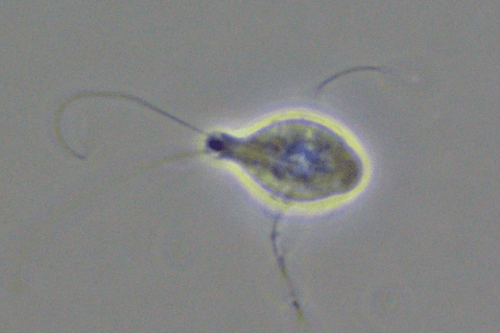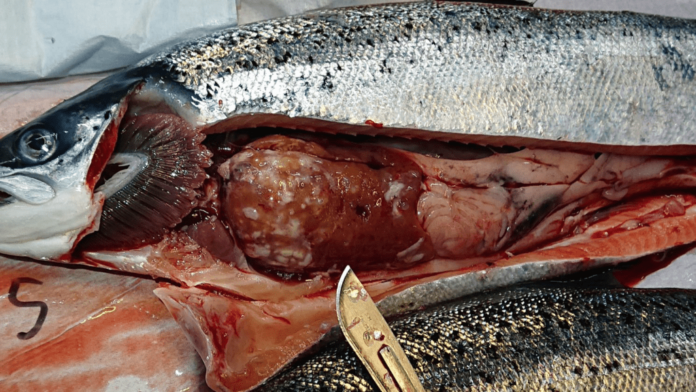What is Spironucleus salmonicida?
In February, salmon producing giant Grieg Seafood revealed that the Spironucleus salmonicida parasite had cost the company some $90 million in downgraded fish since 2022.
This micro-parasite, responsible for causing systemic spironucleosis in salmon, has become a significant concern for fish farms. But what exactly is this parasite and how does it harm salmon?
Spironucleus salmonicida is part of a group of single-celled microparasites typically found in fish, particularly in Norwegian salmonids. These organisms usually inhabit the intestine and thrive in low-oxygen environments. While many species of Spironucleus are harmless intestinal dwellers, certain species, including Spironucleus salmonicida, can transition into the bloodstream and infect the entire host, thereby becoming serious pathogens.

Spironucleosis, the disease caused by this parasite, can lead to high mortality rates in fish. However, its impact isn’t limited to fish deaths alone. The quality of the fish is also severely compromised, often necessitating the discarding of large quantities upon slaughter. In an effort to contain the spread of the parasite, it has frequently been necessary to cull entire infected fish populations.
In 2022, the presence of this parasite, and the disease it causes, were detected in several fish farms across Northern Norway. Alarmingly, it was also identified for the first time in a smolt production facility. An uptick in the number of infected fish and potential spread between neighboring net-pens at sea was observed, signaling a worrying trend.
Systemic spironucleosis, caused by Spironucleus salmonicida, is a rare but severe parasitic disease in farmed fish. The term “systemic” indicates that the parasite spreads to all parts of the fish’s body – including skin, internal organs, and musculature. In these areas, it forms abscesses and ulcers, detectable under the microscope as areas teeming with highly mobile flagellates, roughly 10 µm in size. Mortality rates can be high in infected populations, but even in fish that appear healthy, muscle abscesses can develop, rendering them unsuitable for human consumption.


